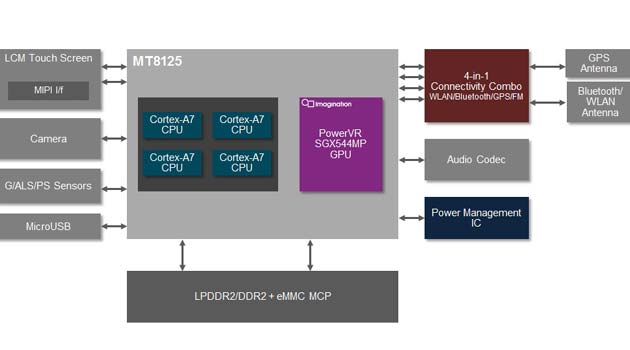The MediaTek MT8135 SOC which is designed specifically for tablets has been officially announced by the Taiwanese manufacturer. This news comes only a few days after the chip maker disclosed its plans of bringing the True Octa Core processor into the market, which according to MediaTek, will allow devices to utilize all eight cores at the same time.
The chip in question like its octa core version, is based on ARM’s big.Little architecture. While the latter has two quad core APs on a single die, the former will instead sport two dual core processors under a single roof. The contenders here are the ever-so-famous Cortex A15 and A7 chips which can be found in mid-range and even high-end smartphones. The downside of current SOCs based on the big.Little approach is that only a single cluster is capable of functioning at a time.

Here’s where this chipset is different. The company notes that both, A15 and A7 clusters will operate in harmony through heterogeneous multi-processing, to deliver enough oomph for carrying out intensive tasks while also maintaining power efficiency. This has been made possible by implementing a scheduler algorithm which is clubbed together with interactive power and adaptive thermal management.
Another interesting feature of the MediaTek MT8135 is the company’s choice of GPU. Accompanying the A7s and A15s is the latest PowerVR Series 6 graphics from Imagination Technologies which is otherwise known as Rogue. This module will be the G6200 GPU which can deliver four times the ALU (arithmetic logic unit) performance compared to previous generation Series5XT chips. It also comes with Wi-Fi, Bluetooth 4.0, GPS and FM as well as Miracast certification.
The SOC is definitely a first of its kind, but how well it performs in real-world scenarios is yet to be seen. What’s known so far is that the company plans on deploying it through high-end tablets sometime during the second half of 2013. Check the video above to see the silicon in action.

